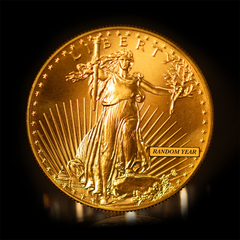When I first started buying gold and silver, I made more mistakes than I can count. Whether it was overpaying for numismatic silver coins or buying hard to sell gold products because they had the lowest premiums above spot – I made all the mistakes!
Lucky for me, I had a great friend (he still is a great friend – hello Filip) who was as interested in precious metals as I was. Together, we learned what made sense to buy and what didn’t and i want to share that knowledge with you.

A post from my Instagram showing one of my early mistakes – a Silver Garfield coin:
https://www.instagram.com/bald_guy_money?igsh=ZTRmdmRnZTB5N3M2&utm_source=qr
Common Misconception When It Comes To Buying Gold & Silver
I often hear people say that it’s the content of what you buy that matters most. The “brand” or the source of the gold or silver doesn’t matter. To a certain degree, that’s true. At the subatomic level the ingredients of a US Silver Eagle are the exact same as a generic silver buffalo round, but they are not treated the same way in the eyes of buyers or sellers (and sometimes tax authorities depending on where you live)!
That is why there are tangible differences between the prices of products and why some are easier to sell than others. Understanding these differences will separate you from beginner investors / stackers and will give you confidence when building your precious metals portfolio / stack.
Why Is Liquidity So Important?
For any investor, the ability to easily get in and out of an investment at a fair price is very important. This is what I mean when I talk about liquidity. For example, a house is a fantastic thing to own, but it takes a long time to sell one - unless you’re ready to sell it for a low price. That is why real estate is generally considered to be less liquid than gold & silver.
Gold & silver, like bonds and stocks, are very liquid investments. They are, for the most part, as easy to sell as they are to buy within a specific range of spot prices. That said, not all gold & silver products are as liquid as others. Buying less liquid products may result in longer sales time or simply having to accept less than what you think may be fair.

More on the topic of liquidity from Investopedia:
https://www.investopedia.com/terms/l/liquidity.asp
Liquidity & Size
As a rule of thumb, the larger the product the less liquid it is. This is logical when you consider the basic rule of economics that dictates – the higher the price of something, the less demand there typically is for it. That’s why 100 oz. silver bars or 1kg gold bars are usually sold with little or sometimes no premium above spot.
If you’re buying large products because you think they’re a better “deal” than other more expensive products (based on price per ounce), just know that you may have to sell it as a “deal” sometime down the line (for spot or even less than spot).

100 oz. Scottsdale Mint Bar from Summit Metals:
https://summitmetals.com/collections/silver-1/products/100oz-silver-scottsdale-king
Liquidity & Popularity
Another point to consider as it relates to liquidity is popularity. The more popular a product is, the easier it is to sell as both peers and dealers will be eager to purchase it. This is why Gold & Silver American Eagles come with such a high premium above spot – they are popular and thus easy to sell (this is somewhat linked to their tax reporting status in the USA – but this not an article about taxes).
Unpopular or unknown products are often sold with low premiums to attract buyers. These products can seem like a deal when you buy them but can become hard to sell later on.
In precious metals, it's a buyer beware market. The biggest issue I see for sellers who buy lesser-known products is they experience quality issues. Black spots appearing on gold bars, imprecise weight of goods, etc. All of these problems will make selling the product, should you need to, a painful process. Be prepared to sell such products at or below spot at some point in the future (as in the case of large products mentioned above).

Silver shot is famous for being affordable but also extremely hard to sell – more on that topic from the Scottsdale Mint at this link:
https://www.scottsdalemint.com/shop/pure-casting-silver-shot-9999-fine/
Consider These Liquidity Questions Before You Buy Any Gold Or Silver Product
- Is the product I am going to buy in high demand? Will it be easy to sell it if I need to? If the answer is no – consider buying another product.
- Is this product recognizable (well known)? If I move to another place, will people know what this product is? If the answer is no – consider buying another product.
- Is this product specific to my geographic location or is it a globally distributed product? If the product is specific to your location and you may move in the future – consider buying another product.
- How long would it take me to sell this product if I needed cash immediately? Will a dealer / reseller buy this product from me if I want to sell it? If a dealer will not buy the product you want to buy, consider buying another product.
- How much are dealers and private buyers paying for the product I want to buy? Is there a big difference between what the dealer is selling for and what the market will buy it back for? If dealers are buying a product well below spot or what they sell it for (10% difference or more), consider buying another product.
What About Numismatic Coins? Are They Good For Investment Purposes?
The questions above are great when assessing boring bullion coins or bars, but they can be inadequate for those who are wondering if numismatic products are right for them.
What are numismatic coins? This may be a new term for some of you, but it’s an important one to know. Numismatics refers to the study of historic types and forms of currency. Whether it’s ancient Roman coins or more recent examples like the Confederate Dollar (which briefly existed during the US Civil War), these historic forms of currency fall under the umbrella of numismatics and have additional value given to them (beyond their precious metal content) due to their uniqueness and historical significance.

Roman Eid Mar coin – it has less than $10 of silver in it, but sells for more than $500,000 due to its historical significance (more on that in the link from NGC below):
https://www.ngccoin.com/news/article/11645/eid-mar-brutus-caesar/
But it’s not only historic examples of currency that fall under the umbrella of numismatics. In 2024, numismatics also includes limited edition and commemorative coins minted by different modern-day mints (like the restrike of the US Morgan Dollar shown below).
Such coins can sell for 50%, 100%, even 900% more than the value of the precious metal content in the coin despite having no real historical significance. This is where most people new to precious “get taken for a ride” or get ripped off.
Of course, there are some examples of limited edition and commemorative coins that become highly valued collector’s items – but it’s very rare and highly specialized knowledge is needed to play in this part of the market!
In my opinion, if you’re purchasing gold & silver to protect the value of your earnings or to protect against turbulence in the global financial system – these coins are about as valuable as your common silver round. That’s why, after making a few mistakes in my early days, I avoid products like this when it comes to “investment purposes” (although I collect for fun).

US Mint Description of the Morgan Dollar Restrike:
https://catalog.usmint.gov/morgan-silver-dollar-2024-uncirculated-coin-24XE.html
Does This Also Apply To Pre-1933 US Gold Coins?
American gold coins minted before 1933 (like Liberty Eagles, St. Gaudens Eagles, and Indian Eagles) are fantastic coins to own, under the condition you are not paying too much to own them!
Sadly, some IRA companies and dealers scare their customers with the threat of gold confiscation as a reason to buy them. An element of this scare strategy is to get their customers to believe that by spending more for gold coins minted before 1933 (predating President Roosevelt’s gold confiscation order) they will be safe from future government-led gold confiscation initiatives.

More on Executive Order 6102 (Gold Confiscation Order) at the link here:
https://en.wikipedia.org/wiki/Executive_Order_6102
As convincing as these stories may sound, they are nothing more than stories intended on selling uneducated customers more expensive graded versions of these older coins. In reality, confiscation of Gold is unlikely in the 21st century for these reasons:
- People are less likely to comply with government requests today than in 1933.
- Door-to-door confiscation is a large task that doesn’t guarantee results (since people will hide their gold).
- Central Banks can bid up the price of gold and tempt people to sell for fiat currency the Central Banks print (this is essentially confiscation of the 21st century).
The unfortunate result of these scare tactics is that when some people go to sell their graded “pre-33” gold coins, they don’t get offered as much money as they were expecting. In fact, most dealers buying back such coins will offer you close to spot for them (graded or not). So, although I am not against pre-33 gold, I simply don’t think they’re a great investment, unless you are collecting them for your own satisfaction.

Image of Pre-33 Gold Coins.
So, What Types Coins & Bars Should I Buy?
If buying collector coins is a huge mistake and liquidity is important when selecting what gold & silver to buy – what types of products should someone consider when building a precious metals portfolio / stack?
Below is a list of the products I buy with an explanation of the role they play in my portfolio. These are products I have in my personal portfolio and ones that I would recommend to friends and family:
Sovereign Bullion Coins & Bars (the core of my portfolio / stack)
- American Eagles & Buffalos
- Canadian Maple Leaf Coins & Royal Canadian Mint Bars
- UK Britannia Coins & Royal Mint Bars
- Australian Kangaroo Coins
- South African Krugerrands
- Austrian Philharmonic Coins
- This includes full 1-ounce coins & fractional pieces.

Image of different gold sovereign bullion coins.
These products are recognized internationally and have special tax benefits in some countries (please research those benefits depending on the country you live in - they usually apply to coins minted by your National Mint). They are the most liquid gold & silver products and trusted by dealers and investors alike. Nearly all of my gold and half of my silver is in such products and they are an indispensable element of any well-built metals portfolio.
Private Mint Bars & Rounds (for when premiums get too high or I just want to affordably get my weight up):
- Pamp Suisse & Valcambi bars are at the top of this list as they are globally recognized and have high quality standards.
- Any other well-known and highly traded private mint coin or bar (Scottsdale Mint products fit this perfectly – they are recognized and come with high quality production standards).
- Buying products from unknown or poor-quality mints because they are at a good price is where many beginners get in trouble – stick with major private mints (like Scottsdale Mint whose products I appreciate).

Image of some Scottsdale Mint products.
These products are ideal for when premiums get high or price becomes a barrier to entry. I specifically stack a large amount of silver in such products as they are typically easy to sell and appreciated by silver stackers / investors. I also have some gold products from private mints (like PAMP & Scottsdale) but it is the minority of my gold position.
“Junk” Products (small portion of portfolio / stack for flexibility):
- US dimes, quarters, half-dollars minted in 1964 and earlier (also known as constitutional silver).
- Other countries also have such silver coins that were circulated – I have found that US coins are the most well understood and most liquid. I do not buy junk silver from other countries.

Image of junk silver coins.
These are great to have as a fractional option for silver to guarantee the flexibility of your stack (meaning you won't have to sell off more than you ever need to by having different weighted products). They are also extremely fun to collect!
Final Words On Buying Gold & Silver
To summarize the message in this article – “when in doubt - keep it simple!”
Too many people lose money in precious metals by purchasing niche products or “deals” thinking they are going to outsmart the system or other metals investors / stackers.
The truth is the best products in the Gold & Silver game also happen to be the most popular and generic products. They come at a reasonable price, they are easy to sell in an emergency, and they hold their value very well!
Check out Summit Metals to find such products at a great price: https://www.summitmetals.com/






